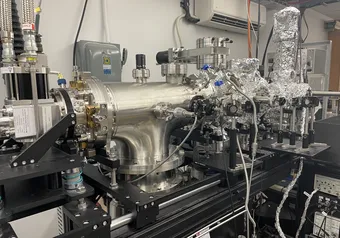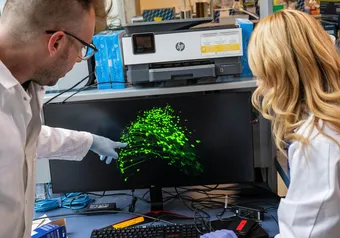The Peer Models Network — an interactive website that allows the public to engage directly with models for healthcare decision-making — has recently been developed here at UBC.
In an initiative funded by the BC SUPPORT Unit, BC Academic Health Science Network and Canadian Foundation for Innovation, Drs. Stephanie Harvard and Mohsen Sadatsafavi at the Respiratory Evaluation Sciences Program (RESP) team in the faculty of pharmaceutical sciences created the network as an innovative way to increase public engagement in the world of health care decision-making.
To make decisions, policymakers often rely on information from health researchers. With the use of scientific computer modelling, researchers can provide important information about the expected effects of health interventions.
“I think there is a benefit to knowing that public health does not make those decisions lightly,” said Harvard. “They are serious decisions, and decision-makers want to be informed by the best scientific evidence.”
The project encourages public engagement in the world of scientific computer models, including clinical prediction models and economic models. Economic models in particular are a vital part of how decision-makers choose which health care treatments, services or interventions the health system should provide. Since we live in a publicly-funded health care system, we want to make sure that we are getting maximum benefit for every dollar spent.
“The website allows visitors to actually view and interact with models for healthcare decision making, including economic models,” Harvard explains. “We’re also developing resources to help people understand how particular models work and what they focus on.”
Harvard partnered with Sadatsafavi, bioengineer and research analyst Amin Adibi and the group at the Collaboration for Outcomes Research and Evaluation (CORE) at UBC. Sadatsafavi, Adibi and their team had already built an open-source platform called PRISM (Programmable Interface for Simulation/Statistical Models) which made models for healthcare decision-making publicly available.
However, these computer models are complex and simply hosting them on a platform is not enough to ensure people will engage with them. This is where Harvard came in. The Peer Models Network compiled the open source PRISM models into a website and have developed a series of resources and short videos to help the public understand how the models function. The website also includes a discussion forum where people can provide input.
“Patients have a wealth of knowledge that stems from their personal experience”
“The advantage of [the website] is we can make the models accessible and transparent to stakeholders other than just the modellers, or the people already in touch with them,” explained Harvard.
One reason it is important to get feedback from the public for health economic models is because they require making social value judgements. A health economic model uses methods to try and estimate the costs and benefits of different interventions, but what goes into the model is up to the people designing them. Modellers try to incorporate the best evidence, but without patient or public engagement, crucial information can be left out.
“I've talked to so many modellers and many agree that you benefit from talking to more and more people,” said Harvard.
“Patients have a wealth of knowledge that stems from their personal experience, and they often can relate what's important to them or aspects of their experience that modellers wouldn't have otherwise known to include.”
Harvard hopes that the Peer Models Network will help increase transparency and public engagement in modelling for healthcare decision-making.
"Every time we build a model, it reflects a priority, it reflects the community,” Harvard said.
There are many ways to get involved! Check out the models and leave any comments on the forum. Scientists can also share their models on the platform. By joining the Peer Network Panel, people can be involved directly by evaluating the website content and getting involved with future research opportunities.
First online
Share this article



![['auto']](https://storage.googleapis.com/ubyssey/media/renditions/screen_shot_2020-06-24_at_9.58.4.width-1000.format-webp.webp)





